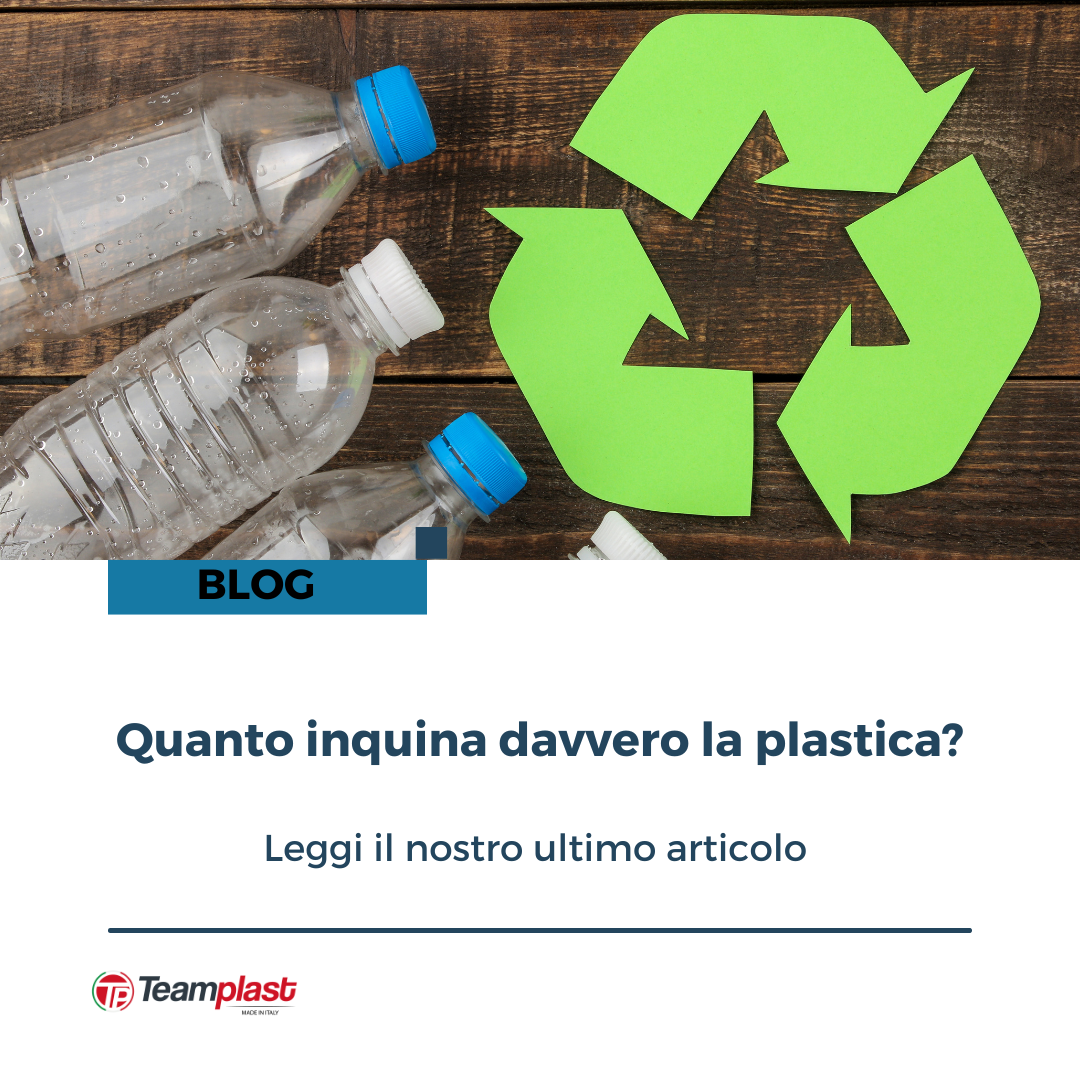In debates about waste management and climate pollution, the material at the center of controversy is always plastic.
When plastics end their life cycle and become waste, most of the public opinion perceives them as harmful and pollutingThis is a very widespread thought which however has the defect of being partial and true only from certain points of view.
It is undeniable that throwing a plastic bottle into the sea poses risks to the ecosystem: abandoned waste, whether it is plastic, aluminum, glass or other materials, always represents a problem to be solved. The real core of the matter, however, is not the material itself but the behavior of man. which can decide whether to make it waste destined to come back to life through the recycling process, or waste scattered around the planet.
If the materials (whatever they are, paper, glass, aluminum, plastic, etc.) are not disposed of correctly and sent to the recovery phase but, on the contrary, are abandoned on the ground, they have an impact on the environment, which can be more or less negative depending on the type of material. For this reason, In order to define more clearly how much a material impacts the environment, other aspects must also be considered, such as the entire life cycle of the product, from its origin to final disposal..
At Teamplast we work and transform plastic and we know its characteristics thoroughly. Let's look at some aspects of this material that are too often overlooked.
Greenhouse gas emissions: a comparison of different materials
A recent research conducted by McKinsey & Co analyzed the amount of greenhouse gas emissions produced during the processing of different materials, including plastic.
The report highlights the fact that greenhouse gas emissions from the production of plastic packaging are lower than those from the processing of other materials, with the exception of steel.
Fourteen different materials were compared in different applications, and in 13 cases plastic was found to produce the least amount of greenhouse gases, in percentages ranging from 10 to 90%.

This helps us understand how complex and numerous the problems arising from ecological pollution are: a product does not pollute only when it becomes disposable, on the contrary, to objectively analyse its impact on the environment the entire process must be considered, from production to final disposal, including recycling.
Plastics and Microplastics in the Ocean: Do We Really Know What’s Going on?
Like every summer, this year too some newspaper headlines have reported alarming news regarding the situation of ocean pollution, especially with reference to microplastics.
While it is true that from the 1950s to the 2000s approximately, the presence of plastic waste and microplastics in marine waters has grown more or less incrementally, in the last 20 years there have been some reversals of the trend. Several studies, like the one attached to this link, highlight how the research conducted in this direction presents gaps that do not allow for the clear identification of real, coherent and measurable temporal trends.
Currently, in fact, there are no reliable studies that demonstrate either the real amount of plastic that covers the ocean floor, or what the future trends could be in terms of microplastics entering through atmospheric deposition. In fact, it is not yet clear whether the amount of microplastics in the oceans is increasing.
To date, researchers have not yet fully understood some significant variables, such as the flow of waste movement in the seas, sinking rates and the mechanisms of material degradation, and this makes it more complicated to draw certain conclusions.
The findings obtained in this way often present conflicting results that risk amplifying the real data on the quantity of plastic in the seas. Furthermore, the main media outlets are responsible for showing only one side of the story: an alarming news item sells more copies than a comforting one.. There are geographical areas, such as Spain and the North Sea, where no variation in the level of plastic pollution has been detected between 2007 and 2017, others (the Adriatic Sea and the Alboran Sea, for example) where in the same period of time the amount of waste has actually decreased (source: Galgani et al., Microplastics and Nanoplastics). That's why it's always better, for those who really want to delve deeper into the subject, rely on studies by scientists and not on what is shown to us by the mass media.
Conclusions
The growing attention in recent years towards climate change has also accelerated the proliferation of research and technological developments aimed at countering or slowing down its consequences. As these studies show us, the starting situation is already quite serious in itself: in short, we started to move late and today we are paying the price of decades of total carelessness towards the subject, but the future seems more comforting than they want us to believe.
We cannot therefore expect there to be simple and univocal solutions but It is essential to continue investing in research into new eco-sustainable and, above all, recyclable materials and advanced technologies. We need a serious global policy that aims to increase controls and sanctions towards the countries that pollute the most, which goes hand in hand with a concrete mass education. Europe is among the most virtuous continents in the management of material recovery, but this information is not disseminated as it should either because it "doesn't make the news" or because there are political and economic interests that push to penalize our continent more in favor of others. In this scenario it is clear how essential it is to promote correct information based on real and certified studies and to focus heavily on man's environmental education.




